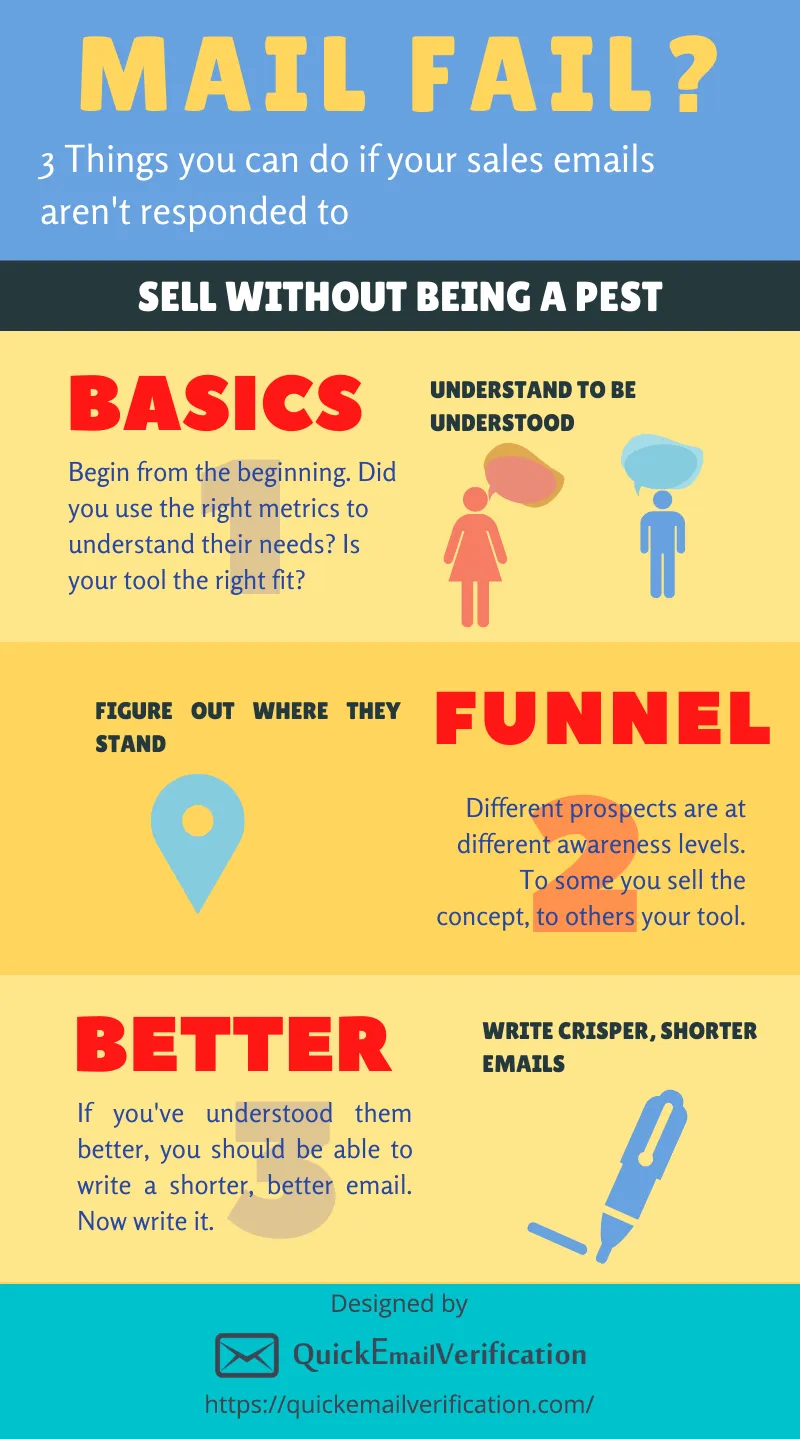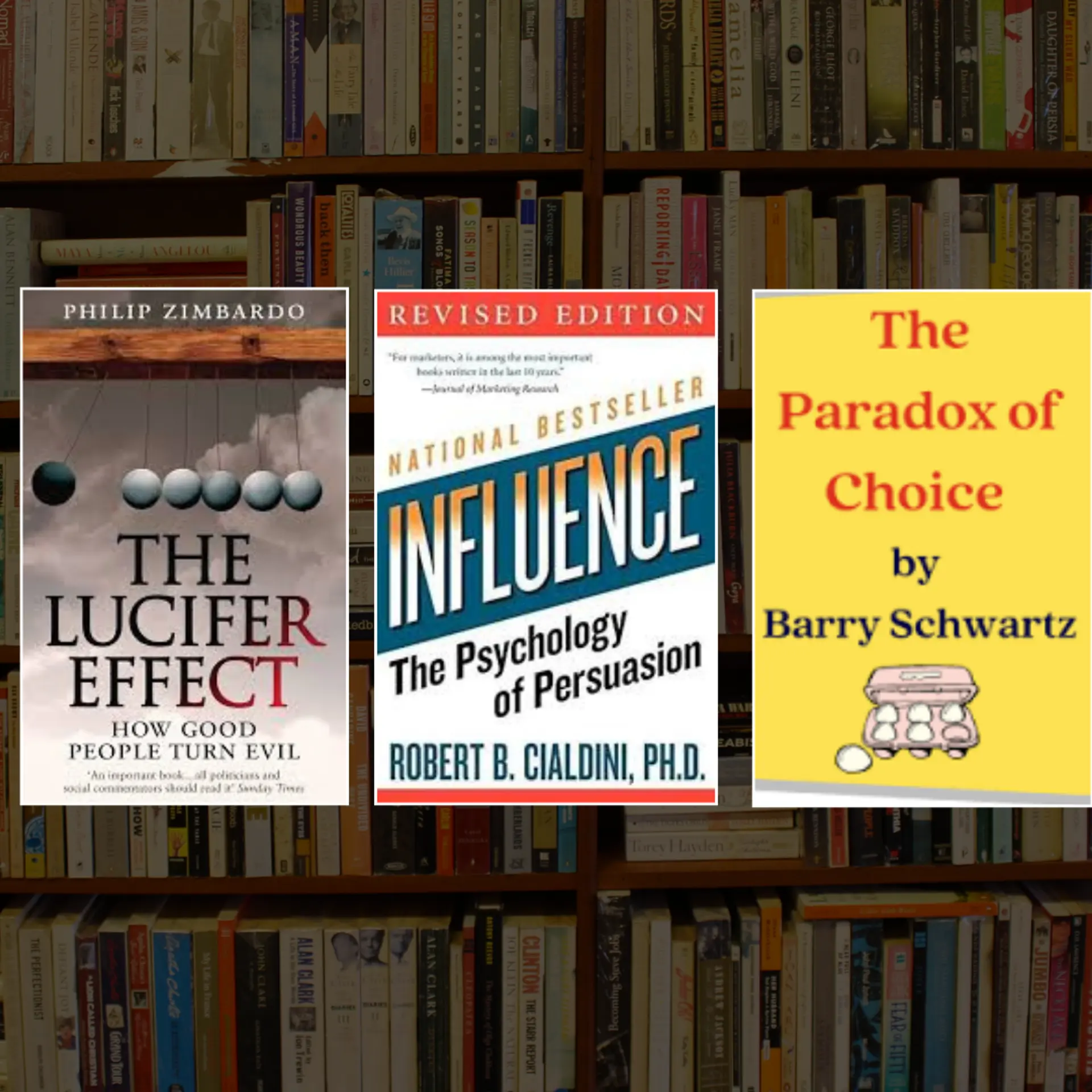

Sales emails not getting results? Here's what to do next
Here are 3 simple tips on what all you can do when your sales emails don't produce results.
Businesses send out millions of emails every day. An estimated 246.5 BN emails were exchanged per day in 2019 (Source). Naturally a very large number of them are sales emails.
These emails are drafted, designed and sent with the hope to engage more prospects, win more customers and bring more revenue. Marketers know this has become one of the most promising sales channels today.
Draft. Write. Send. Measure. Repeat.
Email marketers know this cycle very well. But just like every sales tool, a huge proportion of sales emails bring little to no response. And that can be just a little frustrating.
Here are three simple tips on what can be done to resolve the impasse of the failure of sales emails.

(Infographic courtesy QuickEmailVerification)
1. Go back to the basics
Some marketers buy or rent addresses but it’s not considered a healthy practice. For one, such lists are full of expired addresses or addresses that have been sucked dry from previous marketers. For another, purchased lists generate a huge number of spam complaints, quickly slashing your email deliverability. Soon, service providers may refuse to carry your emails. In short, using purchased lists isn’t a good idea.
Email marketers collect prospects’ email addresses through sign-up pages, gated content and so on. One of the many advantages of collecting email addresses this ways is that you know the person who has signed up has some interest in engaging with you.
In that case, why do sales emails fail?
It’s a good idea to go back to your basics. Do you understand your prospects? Are you getting their pain points right? Is your tool the right fit for their profile?
Importantly, are you solving the problem they want you to solve?
Yes, it’s always difficult to closely understand your prospects because they don’t always provide feedback.
So you must keep fine-tuning your message to ensure you are defining the exact problem your tool solves. That way you’ll have more prospects listening to you.
2. Different folks, different strokes
Let’s say you sell art supplies: brushes, nibs, pencils, colors, papers, canvas and so on. As a part of your content marketing activities, you send out brief emails (with beautifully images, naturally).
Some of your prospects may be experienced artists, fully aware of various art supplies and what each of that item can do. On the other hand, some of your prospects may be beginners.
Naturally you need to talk to them differently.
For example, an experienced artist using water-colors knows there’s something called a water-mist bottle available to create unusual, interesting finishes, something a brush can’t do. That means he is aware there’s a solution available.
To them, you sell your brand.
A beginner, on other hand, likely accepts it as a limitation of water-color and doesn’t even know there’s a solution available. (In fact, to some beginners, there’s no problem either – they don’t even think it’s a limitation.).
To these prospects, you must sell the problem first. Then tell them there’s a solution available. And then finally you are ready to talk about and sell your product, your brand.
Now you see why should have sent different emails to these two groups.
3. Now you can write better
Actually this might be the most difficult part. That’s because of a number of reasons.
As someone who’s into sales, you know your product inside out. You know the smallest of benefits just as well as you know the major strengths.
All this knowledge will impact your writing. It makes you want to mention all (at least most) the advantages your product has.
While it may appear clear and simple to you, your prospects may find your email overwhelming, flooded with information. And they will trash your email.
Just like it’s best to have only one CTA (Call To Action) on your pages, it’s best to highlight only one benefit your product has.
That way, your follow-up emails can be shorter and crisper. And then they stand a much better chance of being responded to.
Is that all?
No it isn’t.
Selling may not be difficult, but it certainly is complex. Each industry, each organization has to counter challenges that are unique, while they attempt to sell something and the initial sales emails don’t click.
Sometime you’ll need to create and share explainer videos. In some cases, you may have to drum up a special offer. And sometimes you’ll need to pick up the phone and directly speak to a prospect.
Whatever you do, the first two of the three tips mentioned above will be essential.
Happy selling!




![Get more Views on YouTube for FREE [Complete Guide]](https://images.yourstory.com/cs/1/c0899f40-0509-11e9-9820-1f4fb7912c4d/Get_more_Views_on_Youtube_complete_guide1561245757751.jpg?mode=crop&crop=faces&ar=1%3A1&format=auto&w=1920&q=75)


